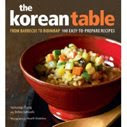Gifts that keep on giving
In the right hands, cookware makes for happy returns
By Debra Samuels, Globe Correspondent December 22, 2008
If you're still looking for a holiday gift, think outside the mall. In fact, think outside all your usual places. The Institute of Contemporary Art's museum shop offers many ultra-hip selections (including an index of chopping boards so you don't mix chicken with veggies). Or head to the North End to Salem Street True Value Hardware, where ravioli molds are nestled beside pizzelle makers. If the person on your list is practical, you might find something at BMS Paper Co. in Jamaica Plain. It's not just paper, but all manner of objects for the sweet and savory professional or home kitchen.
The ICA's gift shop is just a few steps down from the glassed-in lobby. Artful displays range from a funky Banana Bunker ($4.95) to store in your briefcase or knapsack, to the graceful Asian-inspired porcelain teapot ($165). Hard plastic Solo drinking cups ($1.99) are playfully arranged and based on the undulating soft Solo cup landscape in an exhibit by artist Tara Donovan. Retail operations manager Victor Oliveira draws inspiration for his products from ICA shows. U+, the high end of the Umbra kitchen line, is a favorite throughout the store. The company's elegant salad set, called Ensalada ($99), includes a thick glass bowl (red or white) with a pair of magnetic stainless servers that fit together like a puzzle. Chilewich's op-arty white vinyl dots come as placemats ($6.95) or table runners ($24.95).
The Knot Wine Rack ($138) is beautiful even when empty. That pesky business of keeping poultry away from other kitchen tasks is solved with the Index Chopping Board System ($75), which integrates four colored boards in a sleek storage unit. Off kilter and in neon, Hula Vodka and Tumbler Glasses (four for $29.95 and $39.95) may tickle a friend with a sense of humor.
Ken Rothman's family has owned the North End shop Salem Street True Value Hardware for 44 years. In the window, a kaleidoscope of enamelware colanders ($16.99 to 29.99) is your first clue that there's more here than plungers. Mindful of his location, Rothman stocks a selection of hand-cranked pasta makers ($69.99), wood gnocchi boards ($6.99), ravioli stamps ($7.99), and pizzelle makers ($69.99).
Bialetti stovetop espresso makers range from one cup ($21.99) to the larger Mukka Express ($89.99). You'll also find espresso cups and saucers, available in singletons or sets of four ($4.99 to $8.99). (When you're done, walk a few paces to Polcari's at 105 Salem St. for a pound of beans to go with the new coffee maker.) True Value also carries Terra Allegra, an earthy 5 1/2-quart clay baker ($89.99) with a deep red glaze for beans, soups, and cassoulets. Use this pot directly on the burner with a heat diffuser under it, in the oven, in the microwave, or on an outdoor grill. Gloveables ($14.99), those fun rubber gloves, are for friends who want to be fashionable at the sink; glass storage containers and spice jars are for filling before you give away; and a selec tion of cast iron, the longest-lasting and most practical cookware, is for giving away and buying for yourself too.
Don't be misled by the name BMS Paper Co. Paper products are only part of what's in this cavernous treasure chest of a store. The place also sells restaurant and baking supplies, industrial-size jars, canned and frozen foods, and spices. Owner Bob Harrington says people come into his Jamaica Plain store and "wander around for hours." To that end, they might find a 100-quart stock pot ($149) a more practical 8-quart size ($25), and every capacity in between. Whatever you see comes in incremental sizes. Ladles, for instance, go from 1 ounce ($2.29) to 32 ounces ($7.99); mixing bowls start at 3/4 quart ($1) and go up to 16 quarts ($12.75). Whisks, slotted spoons, tongs, and spatulas hang together in a collage. There's a whole section devoted to old-fashioned diner supplies like thick white American-made dishes and mugs. You can even buy those stainless steel cake stands with plexiglass tops that house mile-high frosted confections ($25.99 for a top and stand). Long-handled wood pizza paddles range from $18 to $30.
It's a good bet people will be cooking more at home next year. Your gifts may play starring roles in the months to come.
BMS Paper Co., 3390 Washington St., Jamaica Plain, 617-522-1122.
Institute of Contemporary Art, 100 Northern Ave., Boston, 617-478-3163, http://www.icastore.org/.
Salem Street True Value Hardware, 89 Salem St., North End, Boston, 617-523-4759.
Jaffa/Yafo at Dusk
13 years ago



